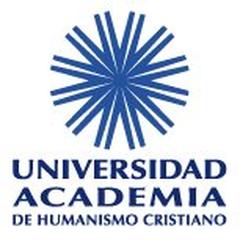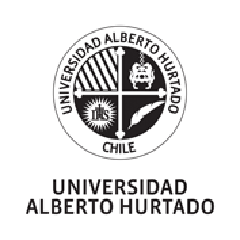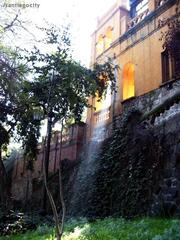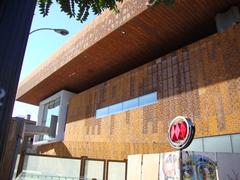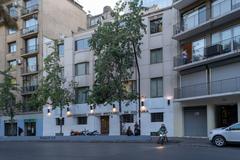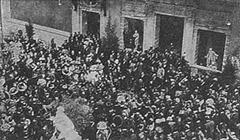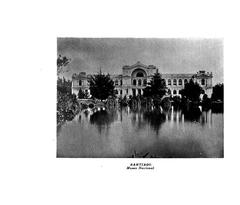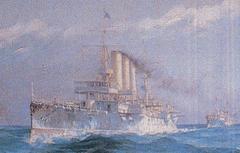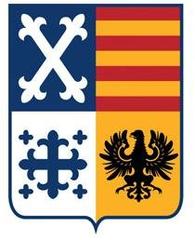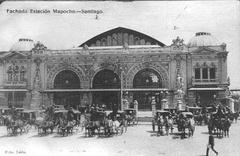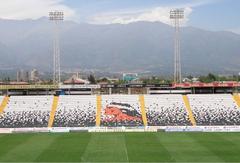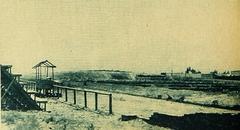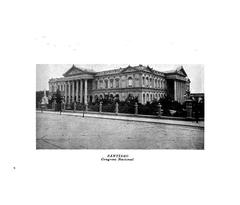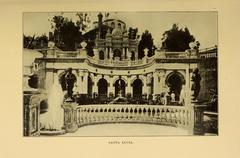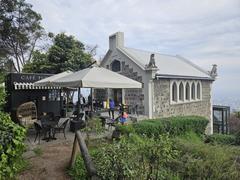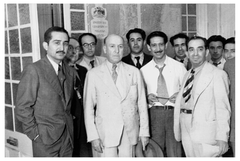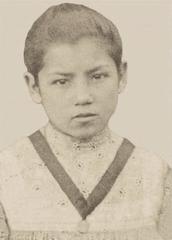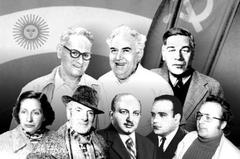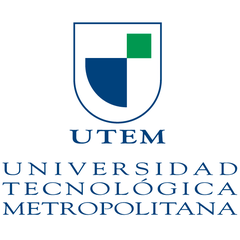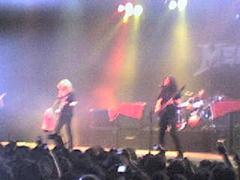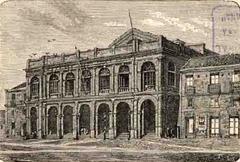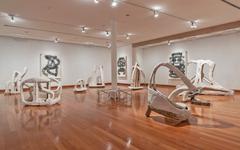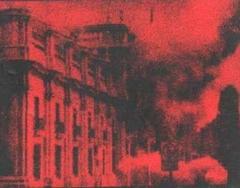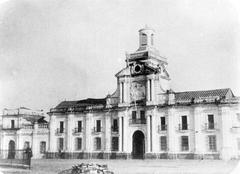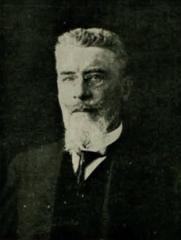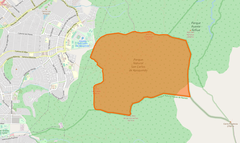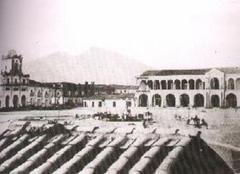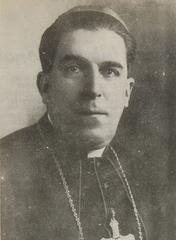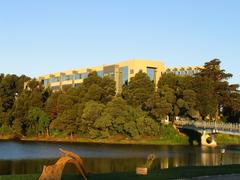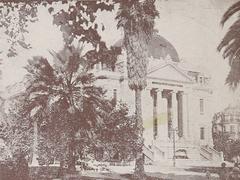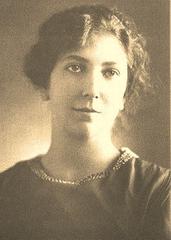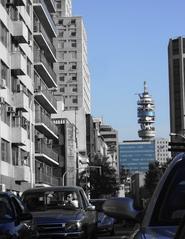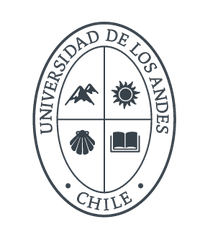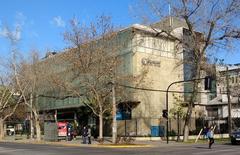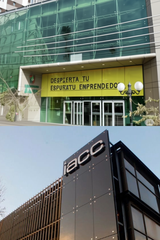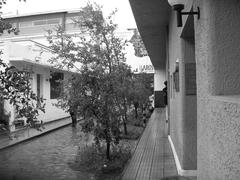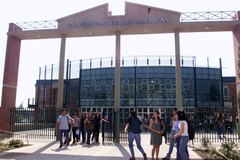Barrio Lastarria, Santiago, Chile: Visiting Hours, Tickets, and Historical Sites Guide
Date: 04/07/2025
Introduction
Barrio Lastarria is a vibrant neighborhood in the heart of Santiago, Chile, renowned for its fusion of colonial heritage, artistic innovation, and contemporary urban life. Originally known as “La Cañada,” this area has evolved from a natural ravine near Santiago’s founding site on Cerro Santa Lucía into a celebrated cultural and architectural enclave. Today, Lastarria is synonymous with bohemian charm, diverse gastronomy, and a thriving arts scene, making it a must-visit for anyone interested in Santiago’s history and culture (thesingular.com; santiagoando.com; Hotel Magnolia; Butterfield & Robinson).
Table of Contents
- Early Origins and Development
- Architectural Flourishing
- Cultural and Intellectual Life
- Political and Social Evolution
- Pedestrianization and Modern Revival
- Visiting Information: Hours, Tickets & Accessibility
- Essential Landmarks and Attractions
- Social and Artistic Identity
- Gastronomy & Nightlife
- Markets and Shopping
- Performing Arts and Street Life
- Parks and Outdoor Activities
- Architectural Highlights
- Festivals and Events
- Tours and Exploration
- Getting There and Practical Tips
- FAQ
- Summary & Call to Action
- References
Early Origins and Development
Barrio Lastarria’s roots trace back to Santiago’s colonial era. Initially known as “La Cañada,” it functioned as a semi-rural buffer between the city center and agricultural lands. Its transformation began in the 19th century, driven by urban reforms and the creation of the Alameda, setting the stage for Lastarria’s emergence as a distinctive urban neighborhood (thesingular.com; santiagoando.com).
Architectural Flourishing (Late 19th–Early 20th Century)
The late 1800s and early 1900s saw Lastarria’s streets adorned with European-inspired architecture. Notable architects like Luciano Kulczewski contributed neogothic, Art Nouveau, and Art Deco buildings, many of which remain today. Landmarks such as Palacio Bruna (1916), the Museo Nacional de Bellas Artes (1910), and the Museo de Arte Contemporáneo exemplify this era’s architectural legacy (santiagoando.com; barriolastarria.cl).
Cultural and Intellectual Life
Named for the 19th-century intellectual José Victorino Lastarria, the neighborhood quickly became a cultural nucleus. Theaters, independent bookstores, art galleries, and institutions such as Plaza Mulato Gil de Castro, Museo de Artes Visuales (MAVI), and the Gabriela Mistral Cultural Center (GAM) fostered a climate of artistic and intellectual exchange (thesingular.com; barriolastarria.cl).
Political and Social Evolution
The 20th century brought cycles of decline and renewal. The construction of the Gabriela Mistral Cultural Center in the 1970s, originally for the UNCTAD III conference, marked a pivotal moment. Post-restoration, GAM stands as a premier venue for exhibitions and performances (santiagoando.com).
Pedestrianization and Modern Revival
Lastarria’s pedestrianization in 2001 invigorated its social life, transforming Lastarria Road into a lively promenade with artisan fairs, open-air markets, and restored historic buildings like Hotel Magnolia and Brasserie Castillo Forestal (thesingular.com; santiagoando.com).
Visiting Information: Hours, Tickets & Accessibility
- General Hours: Neighborhood open 24/7; shops, cafés, and galleries usually 10:00–20:00.
- Museums:
- Museo Nacional de Bellas Artes: Tue–Sun, 10:00–18:00; closed Mon; free entry.
- Museo de Arte Contemporáneo & MAVI: Tue–Sun, 10:00–18:00/19:00; closed Mon; free or discounted entry.
- Gabriela Mistral Cultural Center: Tue–Sun, 10:00–20:00; free for most exhibitions, tickets for special events.
- Iglesia de la Veracruz: Mon–Fri, 9:00–18:00; Sat–Sun, 10:00–17:00; free.
- Accessibility: Most venues and main streets are wheelchair-accessible, but cobblestone streets may pose some challenges.
- Getting There: Metro stations Universidad Católica (Line 1) and Bellas Artes (Line 5) are within walking distance. Buses, taxis, and rideshare apps are also available.
- Guided Tours: Walking tours are widely available, focusing on history, architecture, and gastronomy.
- Tickets: Most museums are free; some special events and performances require paid tickets.
Essential Landmarks and Attractions
Iglesia de la Veracruz
A neoclassical church and heritage site, central to the neighborhood’s development. Restored façade and accessible entrance (Hotel Magnolia; Wikipedia).
Plaza Mulato Gil de Castro
A vibrant square surrounded by historic facades, home to MAVI and the Santiago Archaeological Museum. Popular for weekend markets and performances.
Gabriela Mistral Cultural Center (GAM)
Contemporary arts venue offering exhibitions, live theater, and music. Fully accessible and architecturally significant (TravelAge West).
Museo Nacional de Bellas Artes
Latin America’s oldest fine arts museum, housing over 3,000 works in a beaux-arts building (Hotel Magnolia).
Museum of Visual Arts (MAVI) and Museum of Contemporary Art (MAC)
Showcasing Chilean and international contemporary art, both institutions offer free or affordable entry and rotating exhibitions (Hotel Magnolia).
Palacio Bruna
A 1916 neogothic mansion, emblematic of nitrate-era wealth. Not open to the public but admired for its architecture (santiagoando.com).
Cerro Santa Lucía
Historic hill and park offering panoramic views, gardens, and castle-like architecture (santiagoando.com; Great Chile).
Social and Artistic Identity
Barrio Lastarria thrives as a creative and bohemian hub. Its cobblestone streets, European-inspired buildings, and vibrant public spaces foster a dynamic community. Street art, open-air exhibitions, and markets animate the neighborhood, alongside institutions like GAM and MAVI that feature contemporary shows and performances (Butterfield & Robinson; ContactChile).
Gastronomy & Nightlife
Restaurants:
- Bocanáriz: Over 300 Chilean wines, tapas, and pairing menus (TravelAge West).
- Chipe Libre: Pisco cocktails and inventive cuisine.
- Mulato, Les Assassins, Lucía Bistró: Creative Chilean dishes (Turistik).
Cafés & Ice Cream:
- Emporio La Rosa: Renowned artisanal ice cream.
- Colmado: Vegan-friendly café (Supertravelr).
Nightlife:
Sophisticated bars, live music, and LGBTQ+-friendly venues create a lively yet welcoming scene (Wikipedia; SantiagoChile.com).
Markets and Shopping
- Antiques & Book Fairs: Weekend kiosks with rare books, crafts, and vintage items (Hotel Magnolia).
- Boutiques: Local jewelry, fashion, and art (Turistik).
Performing Arts and Street Life
- El Biógrafo Cinema: Historic venue for independent films (SantiagoChile.com).
- Theaters: Small venues and GAM host avant-garde performances (TravelAge West).
- Street Performers: Painters, musicians, and buskers enliven plazas and promenades (AllSantiago).
Parks and Outdoor Activities
- Parque Forestal: Green oasis for walking, jogging, or picnicking; cultural corridor between museums (Turistik).
- Cerro Santa Lucía: Popular for scenic strolls and photography (Great Chile).
Architectural Highlights
- Belle Époque and Art Deco: Landmarks like La Casa de Los Torreones and Luciano K Hotel feature original 1920s details (TravelAge West).
- La Gárgola: Distinctive historic building on Merced Street (Hotel Magnolia).
Festivals and Events
- Cultural Festivals: Outdoor celebrations of literature, film, music, and gastronomy fill the calendar, especially in summer (Wikipedia).
- Weekend Markets: Artisan and antique fairs, live performances, and pop-up exhibitions animate the neighborhood (SantiagoChile.com).
Tours and Exploration
- Self-Guided Tours: Apps like GPSmyCity offer walking itineraries (GPSmyCity).
- Guided Tours: In-depth experiences combining architecture, history, gastronomy, and nearby districts (The Singular Hotels).
Getting There and Practical Tips
- Location: Central Santiago, between Avenida Alameda and Parque Forestal (YourWayToSantiago).
- Metro: Universidad Católica (Line 1) and Bellas Artes (Line 5).
- Buses: Serve main avenues; use Bip! card.
- Airport Access: 30–45 minutes by taxi or shuttle from SCL.
- Safety: Among Santiago’s safest areas; standard urban caution advised (Xplrverse).
- Accessibility: Wheelchair access in most attractions; cobblestones can be challenging.
- Health: Tap water is safe; emergency numbers: Ambulance (131), Police (133).
Frequently Asked Questions (FAQ)
Q: What are the visiting hours for museums and attractions?
A: Most museums open Tue–Sun, 10:00–18:00; closed Mon. Neighborhood accessible 24/7.
Q: Are tickets needed?
A: Many museums and public events are free; some performances and exhibitions require tickets.
Q: How do I get there?
A: By Metro (Lines 1 or 5), bus, taxi, or rideshare.
Q: Is it accessible for people with disabilities?
A: Major venues are accessible; some streets have cobblestones.
Q: Are guided tours available?
A: Yes, both guided and self-guided tours are widely offered.
Summary & Call to Action
Barrio Lastarria offers a microcosm of Santiago’s history, creativity, and cosmopolitan flair. From its colonial beginnings and architectural gems to its dynamic cultural life and welcoming social atmosphere, Lastarria is a destination where the past and present converge. Whether you’re visiting museums, sampling Chilean cuisine, or enjoying street performances, this neighborhood promises an enriching experience.
To maximize your visit, plan ahead for museum hours and tickets, embrace public transit, and immerse yourself in Lastarria’s festivals and markets. Download the Audiala app for real-time updates, guided tours, and exclusive local tips. Follow us on social media for event alerts, neighborhood highlights, and travel inspiration.
References
- Barrio Lastarria Santiago: History, Visiting Hours, Tickets & Cultural Attractions, 2025, The Singular
- Barrio Lastarria Santiago: History and Culture, SantiagoAndo
- Discover Barrio Lastarria: Santiago’s Vibrant Cultural and Artistic Hub, Butterfield & Robinson
- Barrio Lastarria Santiago: Visiting Hours, Tickets, and Top Historical Sites, Hotel Magnolia
- A Neighborhood Guide to Lastarria in Santiago, Chile, TravelAge West
- Barrio Lastarria: Bohemian Santiago, SantiagoChile.com
- Practical Visitor Information for Barrio Lastarria, YourWayToSantiago
- Is Chile Safe for Travelers in 2025?, Xplrverse
- ContactChile
- Turistik
- Wikipedia
- AllSantiago
- Great Chile
- Supertravelr
- GPSmyCity
- The Singular Hotels
